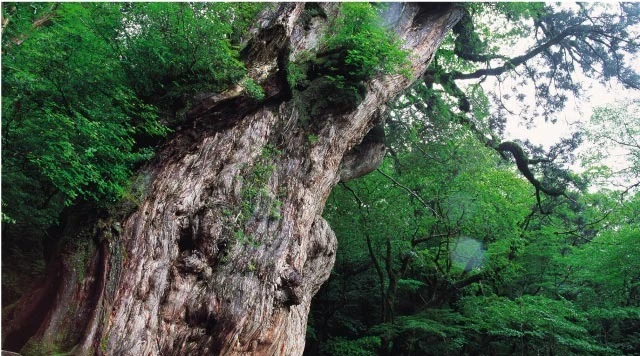
Declaration of Kagoshima Environmental Studies Program
The demands on human cultures in dealing with environmental degradation will likely be the biggest challenge of the 21st century. The issue arises from dual foundations. Firstly, we are destroying the environment around us. Secondly, we have lost the sensibilities towards nature that once resided inside us.
The environment is discussed most frequently in the context of either the natural sciences and technological civilizations or politics and institutions; the discussion also finds voice in art, citizens’ movements and community building. At its root, however, the issue originates from the duality and paradox of human existence: homo- sapiens as an embodied species embedded right into the natural world, and humans as cultural entities capable of manipulating nature from a position above and transcending nature. In the realm of pragmatic ideas , humans have yet to develop an ideology that embraces both of these elements.
The subject matter required for consideration covers a broad range of topics and may extend far beyond traditional academic fields. The missing clues may lie not in abstract thinking but in our experience of the real embodied world. The real embodied world in this context means our presence in, and continuous interaction with, the nature that surrounds us, a place of engagement where we can become aware of truths contingent on the long history of coexistence between humans and nature. What we need to do is discover the amazing wisdom humans have accumulated over millennia, mix it audaciously with the present-day intellect and start building a new relationship with our future. We need to work persistently in the real world to find practical solutions.
To coexist symbiotically and harmoniously with nature and the environment, we must start with restoring and resuscitating the nature and environment closest to hand. We also need to reinvent ourselves. In doing so, we need to take a scientific, logical and systematic approach; yet, importantly, we also need to acquire a sense of reality that allows us to strike a balance with, and ease the tens ion between, our regained sensibilities towards a naturally attuned life and the materialistic needs of our everyday life.
The program envisioned herein makes clear that we would rather prepare and present small but concrete proposals than act in the role of sophisticated critic. We have chosen Kagoshima in order that we may take a closer look at what should be done and consider how a solid proposal can be made to the world-present and future. That is the first step we will take towards setting the Kagoshima Environmental Studies program in motion.
(文責:山崎美智子)
About the “Kagoshima Environmental Studies Program” of Kagoshima University
1. Objective of the Kagoshima Environmental Studies Program The Kagoshima Environmental Studies Program is an interdisciplinary research project that Kagoshima University launched in 2008. Presently, participants include not only faculty members from the natural sciences and cultural and social studies, but also people from outside academia such as local administration officials and members from the private sector. Based on the Declaration of the Kagoshima Environmental Studies Program, we seek to shed new light on environmental issues from the perspective of our daily life and to search for solutions in the field in order to make concrete proposals.
2. Activity features So far, we have published six books which are accessible for lay readers. We also visited the islands of the Amami island chain and held symposia and seminars in order to make ourselves understood and to listen to the opinions of the locals, because we want our study and research to get closer to the field and we want to work out a persuasive language that responds to real life issues.
3. Past activities
The Kagoshima Environmental Studies Program has been undertaking investigation and study projects every year since 2009. Making use of outside funding such as the Environment Ministry’s commissioned research projects, the research subjects which have been worked on involve of communities building in harmony with nature at World Natural Heritage sites in Japan and also comparison between regions and building of management systems for the World Heritage inscription of the Ryukyu arc based on scientific knowledge. Joint research projects with local administrations and citizens have been implemented since Year 2013. It began with the issue of “the ideal relations between World Natural Heritage and local environment and culture”. “Amami International Feral Cat Symposium” in 2015 had nine study meetings for preparation and connected Amami with the university by the Internet to have discussions with many different people on the “feral cat” issue. Recently, the project has connected the university with elementary and senior high schools, creating new types of partnerships such as sending lecturers and support for publishing a picture book.
Pamphlet
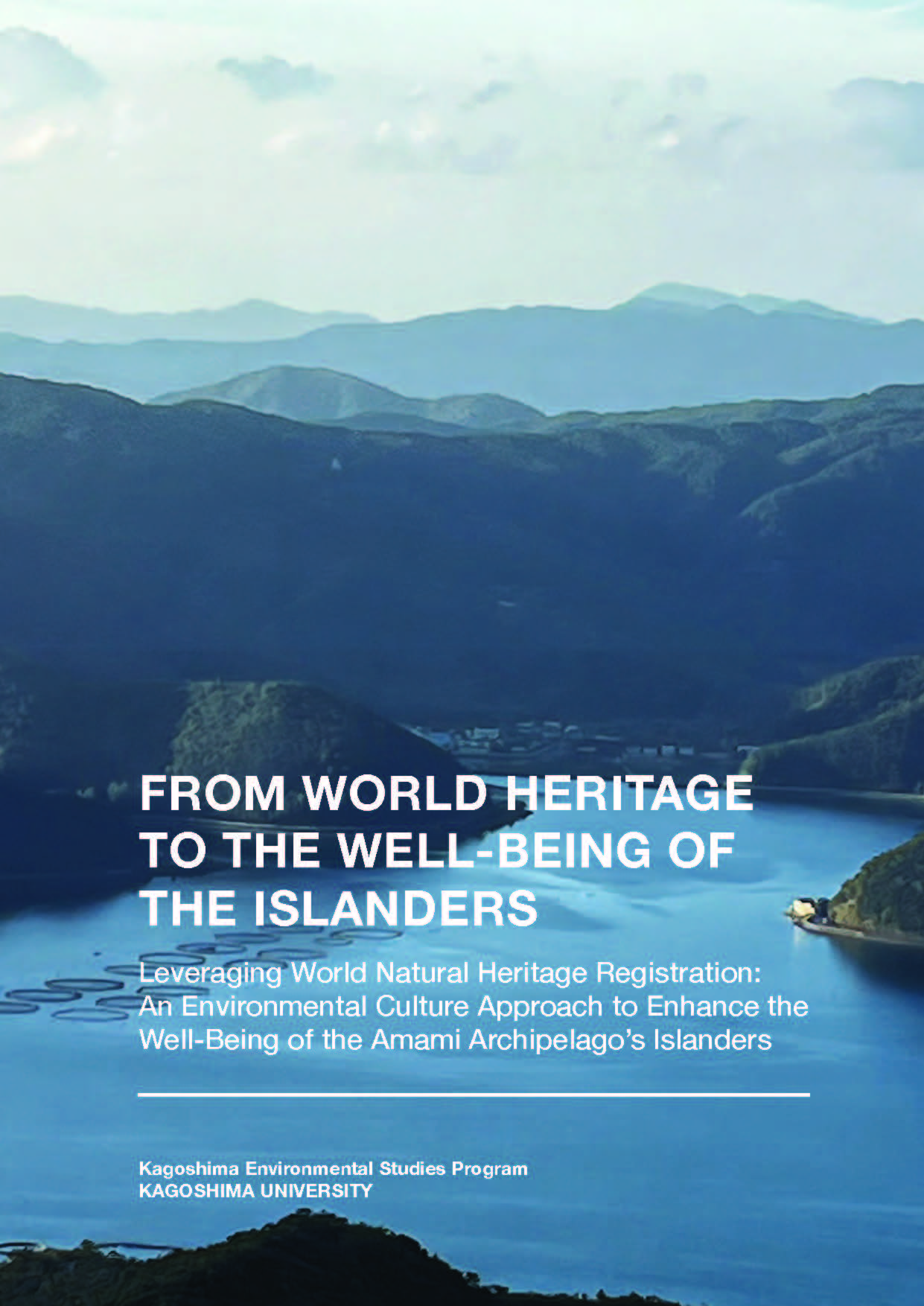
Year 2025:
FROM WORLD HERITAGE TO THE WELL-BEING OF THE ISLANDERS
E-book in English
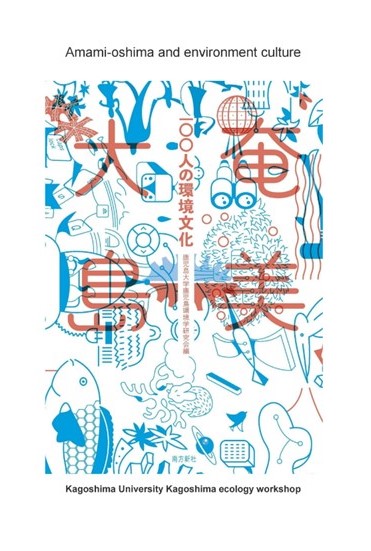
Year 2022:
Amami-oshima and environment culture
Publications
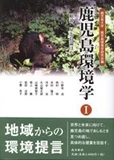
Year 2009:
Kagoshima Environmental Studies I
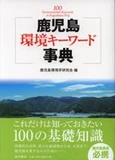
Year 2009:
Key-words Dictionary of the Kagoshima Environment
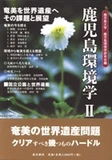
Year 2010:
Kagoshima Environmental Studies II
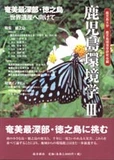
Year 2011:
Kagoshima Environmental Studies III
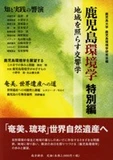
Year 2013:
Kagoshima Environmental Studies Special Edition
100 Landscapes of 100 Kagoshima People
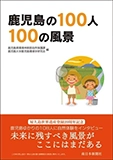
Year 2013:
100 Landscapes of 100 Kagoshima People

Year 2014:
Kibaryu (Let’s work hard) island!

Year 2015:
May the cat be out of the house?

Year 2015:
I thought about the future of Amami where humans, cats and nature can coexist
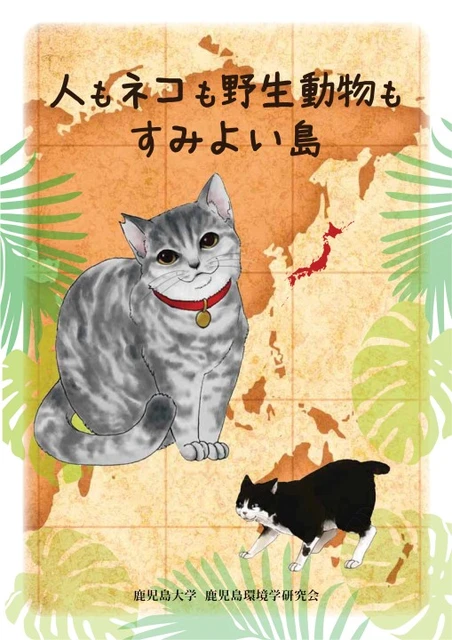
Year 2016:
An island where people, cats and wildlife can coexist
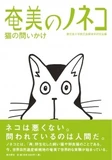
Year 2018:
Feral Cat in Amami ;Cat asks
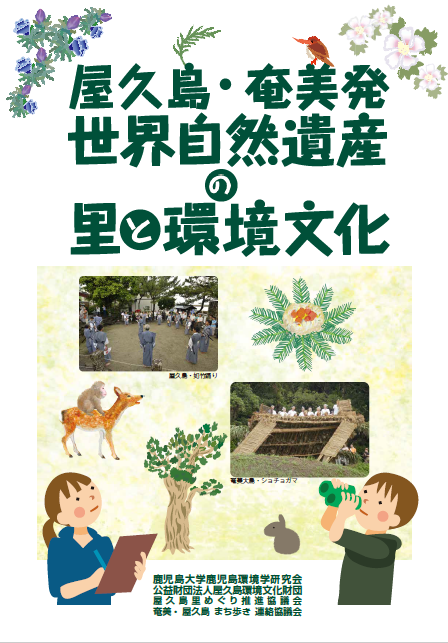
Year 2023:
From Yakushima and Amami Islands; Villages and Environment Culture of World Natural Heritage (digital publishing)
Activities
The Kagoshima Environmental Studies Program is an interdisciplinary research effort with the objective of rethinking environmental issues from a local perspective so that the challenges Yakushima and Amami are facing are analyzed and concrete solutions are found in the field.

in Year 2019
Following 2017-2018, the theme of our activities during Year 2019 was Eco-friendly Culture.
A symposium titled “Symposium to Think the Environment and Culture of Past Naze&The future of Amami Oshima” was held on 23 September 2019. It was held at the AiAi-Hiroba in Amami-city. The event was organized jointly by Naha Nature Conservation Office of the Ministry of the Environment and Kagoshima Prefecture. About 100 participants from Amami City took a tour around local villages to develop a deeper understanding about the environment and culture of Naze.
Also, the results of research on the environment and culture of Amami were summarized in a E-book.
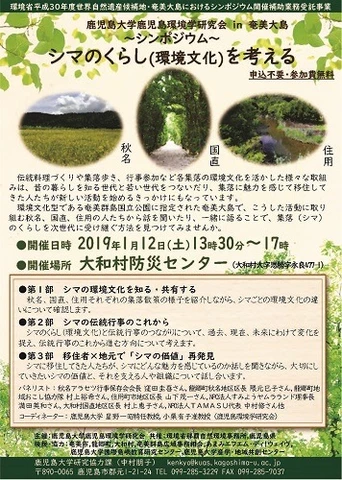
in Year 2018
Following 2017, the theme of our activities during Year 2018 was Eco-friendly Culture.
A symposium titled “Symposium to Think the Environment and Culture of Our Areas” was held on 12 January 2019. It was held at the Yamato-son Disaster Reduction Center in Ongachi, Yamato-son, Oshima-gun. The event was organized jointly by Naha Nature Conservation Office of the Ministry of the Environment and Kagoshima Prefecture. About 60 participants from Yamato-son and Amami City presented case studies and took a tour around local villages to develop a deeper understanding about the environment and culture of Kuninao village in Yamato-son.
Also, the research of Feral cat in Amami results up from Year 2015 were compiled in book: Feral Cat in Amami ;Cat asks.
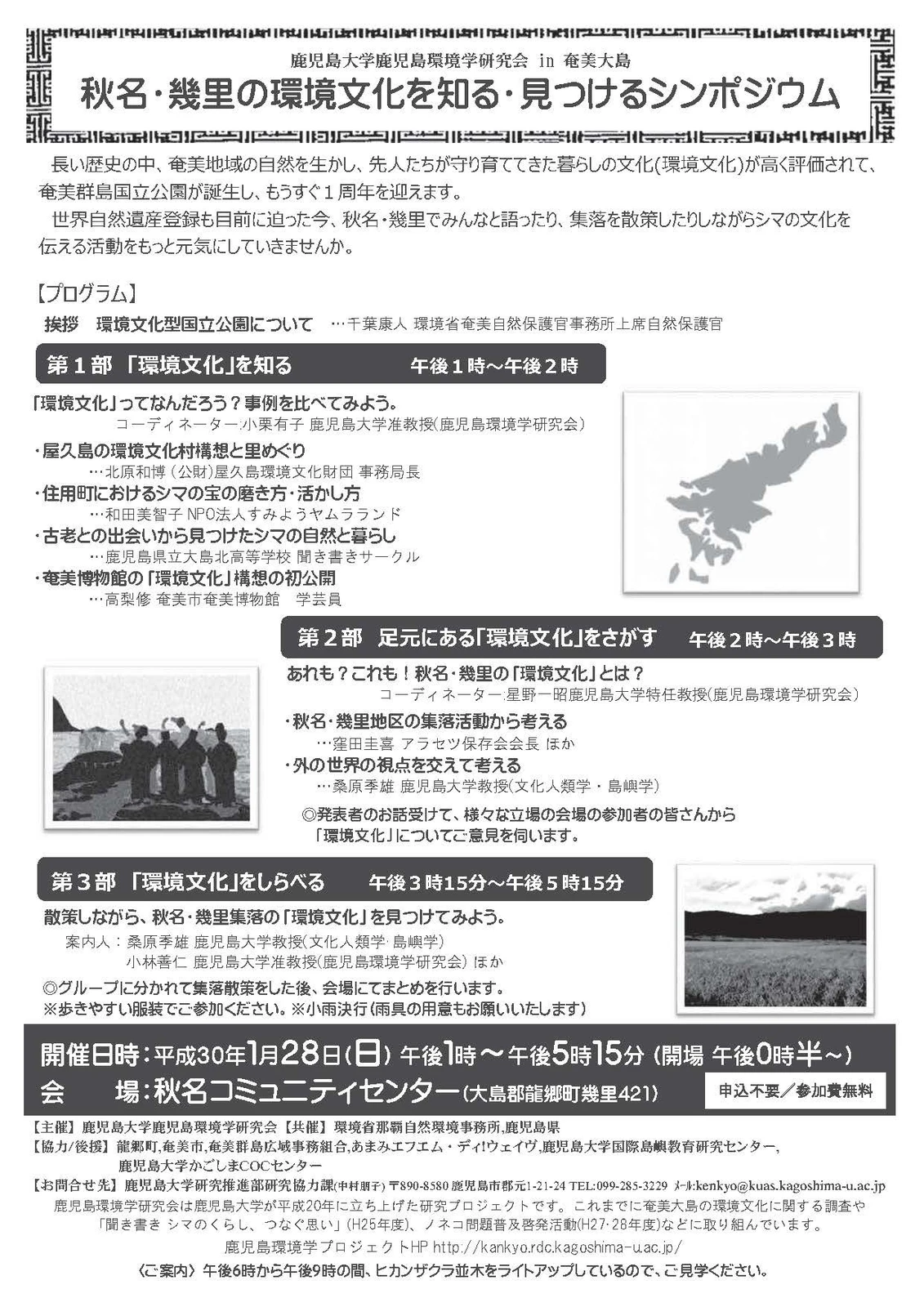
in Year 2017
The theme of our activities during Year 2017 was Eco-friendly Culture.
A symposium titled “Symposium to Understand and Discover the Environment and Culture of Akina and Ikusato” was held on 28 January 2018. It was held at the Akina Community Center in Ikusato, Tatsugo-cho, Oshima-gun. The event was organized jointly by Naha Nature Conservation Office of the Ministry of the Environment and Kagoshima Prefecture. About 90 participants from Tatsugo-cho and Amami City presented case studies and took a tour around local villages to develop a deeper understanding about the environment and culture of Akina and Ikusato.
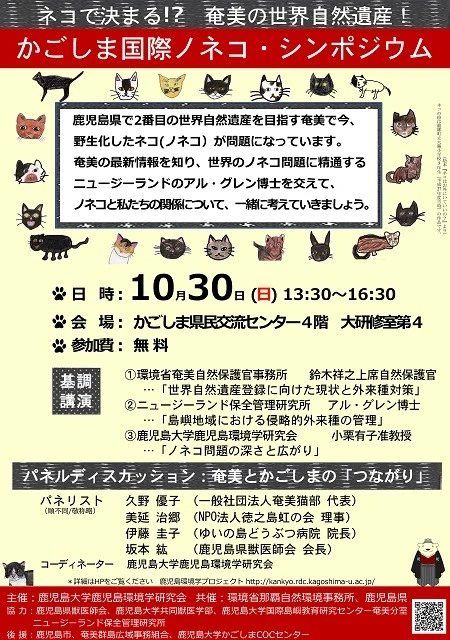
in Year 2016
In Year 2016,“Kagoshima International Feral Cat Symposium” had nine study meetings for preparation and connected Amami with the university by the Internet to have discussions with many different people on the “feral cat” issue.
The research results were organized into publications.”An island where people, cats and wildlife can live together.” were published.
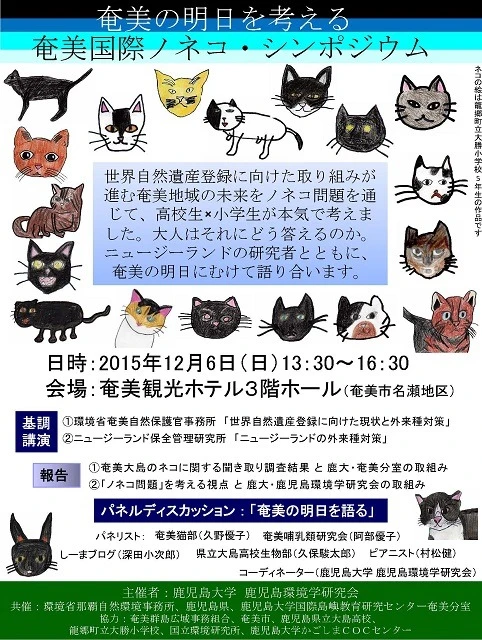
in Year 2016
In Year 2015,“Amami International Feral Cat Symposium” had nine study meetings for preparation and connected Amami with the university by the Internet to have discussions with many different people on the “feral cat” issue.
The research results were organized into publications.“May the cat leave the house? “,“I thought about the future of Amami where humans, cats, and nature can live together..”were published.
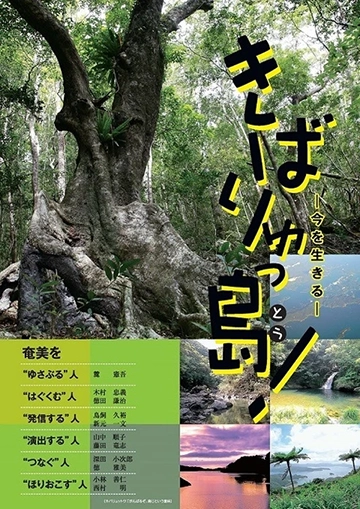
in Year 2014
In Year 2014, a joint research on Amami with the practitioners from a variety of different fields progressed throughout the year. As a result, field workers and academia have come closer together, the seeds of future research were planted, and a research organization took shape. In order to make the project known more widely by the public, a new brochure-style publication in of book-form is now available at bookstores.

in Year 2013
In Year 2013, the research results up to Year 2012 were compiled in two books: Kagoshima Environmental Studies Special Edition and 100 Landscapes of 100 Kagoshima People. Also, a joint investigation and research in Amami-Oshima took place in partnership with local experts and organizations on how to make the most of the World Natural Heritage designation in order to proceed with community building based on the local environment and culture.
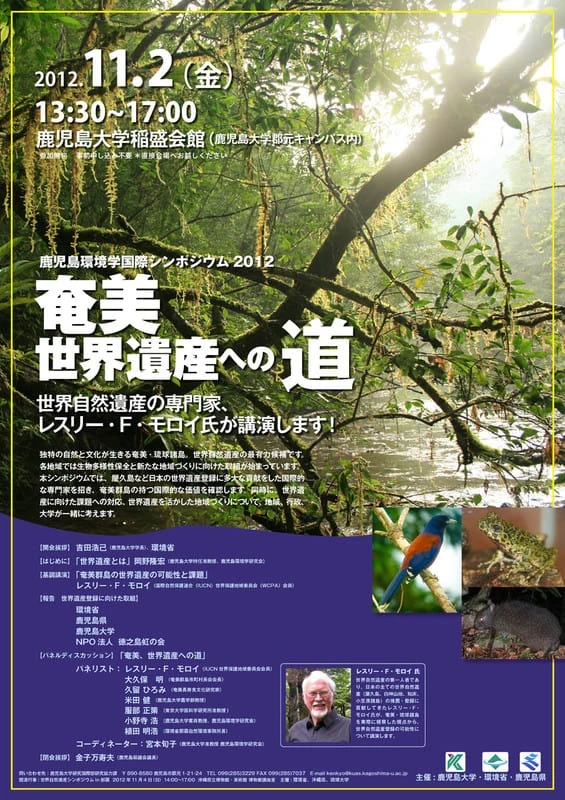
in Year 2012
In Year 2012, Kagoshima Environment International Symposium—Amami, the road to World Heritage designation—was held with the aim of developing some thought about the utilization of World Heritage designation in nature conservation and community building on the Amami Islands, which is a candidate for designation as a World Natural Heritage Site. Other activities include gathering and sharing of biodiversity information.

in Year 2011
The activities in Year 2011 include publication of Kagoshima Environmental Studies III, a briefing session in Setouchi-chō and information gathering by the World Heritage Committee. A comprehensive course on Kagoshima Environmental Studies commenced in the Environmental Education Program at the Graduate School.
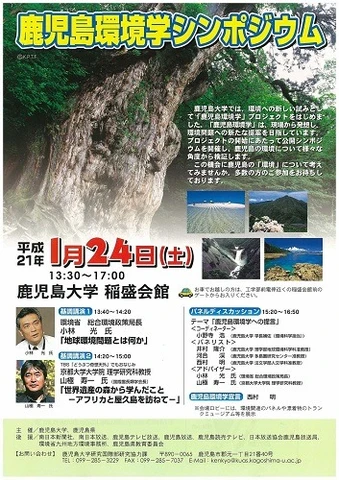
from Year 2008 to 2010
Four years have passed since the Kagoshima Environmental Studies Program was launched in 2008. Focused on the environment, which is the most important issue of our time, the project is aimed at field-oriented research on Yakushima and Amami in order to disseminate information from Kagoshima University to the country at large and make policy proposals in an active way.
Research results are compiled in publications available at bookstores. From Year 2009 to 2010, Kagoshima Environmental Studies I, Kagoshima Environmental Studies II and Key-words Dictionary of Kagoshima Environment were published.
Events take place every year. In January 2011, Tokunoshima Forum was held in Tokunoshima and the President of Kagoshima University participated. As a project open to society, the working members include the faculty members of Kagoshima University, journalists, Kagoshima Prefectural Government staff and a representative of an interpretation services company.
Members of the study group ( in Japanese syllabary order)
- IMURA, Ryusuke ;Kagoshima University
- UGAWA, Shi ;Kagoshima University
- EIMURA, Naoko ;Kagoshima University
- OKUYAMA, Masaki ;Kagoshima University
- OKUYAMA, Yoichiro ;Kagoshima University
- OGURI, Yuko ;Kagoshima University
- KAZISA, Tuyoshi ;Kagoshima University
- KAWAI, Kei ;Kagoshima University
- KAWANISHI, Motohiro ;Kagoshima University
- KOBAYASHI, Yoshito ;Kagoshima University
- SUZUKI, Eiji ;Kagoshima University
- SON, Dajon ;Kagoshima University
- HIRA, Mizuki ;Kagoshima University
- FUJITA, Shiho ;Kagoshima University
- MIYASHITA, Masaaki ;Kagoshima University
- MIYAMOTO, Junko ;Kagoshima University
- YAMAMOTO, Tomoko ;Kagoshima University
- WATANABE, Shuntaro ;Kagoshima University
- Research Cooperation Division ;Kagoshima University
- IWATA, Jiro ;Kagoshima child and nature research institute(NPO)
- OKANO, Takahiro ;Ministry of the Environment, Government of japan
- ONODERA, Hiroshi ;The Yakushima Environmental and Cultural Foundation
- KADOTA, Husako ;The editorial office, Minami-Nippon Shimbun
- SUZUKI, Mariko ;Amami Wildlife Conservation Center
- TAKATSU, Takashi ; The Open University of Japan
- TAKENAKA, Yasunori ; Yakushima Ranger Office
- NAKAMURA, Tomoko
- NAKAYAMA, Naoki ;Kagoshima Prefectural Government
- NIGI, Akana
- NISHIMURA, Akira ;The University of Tokyo
- FUKAMINATO, Kyoko ;Kagoshima Prefectural Government
- HOSHINO, Kazuaki ; Wetlands International Japan
- MARUYAMA, Kentaro ;Minaminihon Broadcasting Co., Ltd.
- MIYAZAWA, Yasuko ;Kagoshima Prefectural Government
- YAMASAKI, Michiko ;IS Interpreters Systems
- YAMANE, Atsuhiro ; Amami-Oshima World Heritage Conservation Center
- YOKOYAMA, Nana ; Kagoshima Prefectural Government
As of Apr, 2023